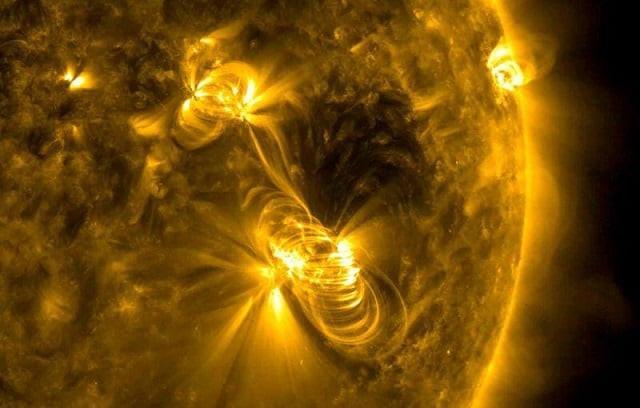The sun is less active than similar stars. That's good news
The sun is an average-sized star that was formed more than 4.5 billion years ago and is halfway through its lifespan

A medium-sized (M2) solar flare and a coronal mass ejection (CME) erupting from the same, large active region of the Sun on July 14, 2017. PHOTO: REUTERS
Researchers said on Thursday that an examination of 369 stars similar to the sun in surface temperatures, size, and rotation period - it takes the sun about 24-1/2 days to rotate once on its axis - showed that they displayed on average five times more brightness variability than the sun.
“This variability is caused by dark spots on the surface of the star rotating in and out of view,” said Timo Reinhold, astronomer of the Max Planck Institute for Solar System Research in Germany, lead author of the research published in the journal Science.
“A direct measure of solar activity is the number of sunspots on the surface.”
A huge asteroid will safely pass by Earth on Wednesday
The sun - essentially a hot ball of hydrogen and helium - is an average-sized star that formed more than 4.5 billion years ago and is roughly halfway through its lifespan. Its diameter is about 1.4 million km. Its surface temperature is about 10,000 degrees Fahrenheit.
“Temperature and rotation period are thought to be the major ingredients for the dynamo inside the star, which generates its magnetic field, and eventually the number and size of the spots causing the brightness to vary. Finding such stars with very similar parameters as our sun but being five times more variable was surprising,” said Reinhold.
Elevated magnetic activity associated with sunspots can lead to solar flares, coronal mass ejections - large expulsions of plasma and magnetic field from the outermost part of the sun’s atmosphere - and other electromagnetic phenomena that can affect Earth, for example disrupting satellites and communications and endangering astronauts.
NASA employees to work from home due to coronavirus
Solar monotony may be good news.
“A much more active sun might have also affected Earth on geological time scales - paleoclimatology. A ‘too active’ star would definitively change the conditions for life on the planet, so living with a quite boring star is not the worst option,” said Reinhold.
The researchers compared data on similar stars to historical records of the sun’s activity. These records included about 400 years of observational data on sunspots and about 9,000 years of data based on chemical element variants in tree rings and ice cores caused by solar activity. These records indicated the sun has not been much more active than it is now.
The findings, according to Reinhold, do not rule out that the sun may be in a quiet phase and may become more variable in the future.



















COMMENTS
Comments are moderated and generally will be posted if they are on-topic and not abusive.
For more information, please see our Comments FAQ